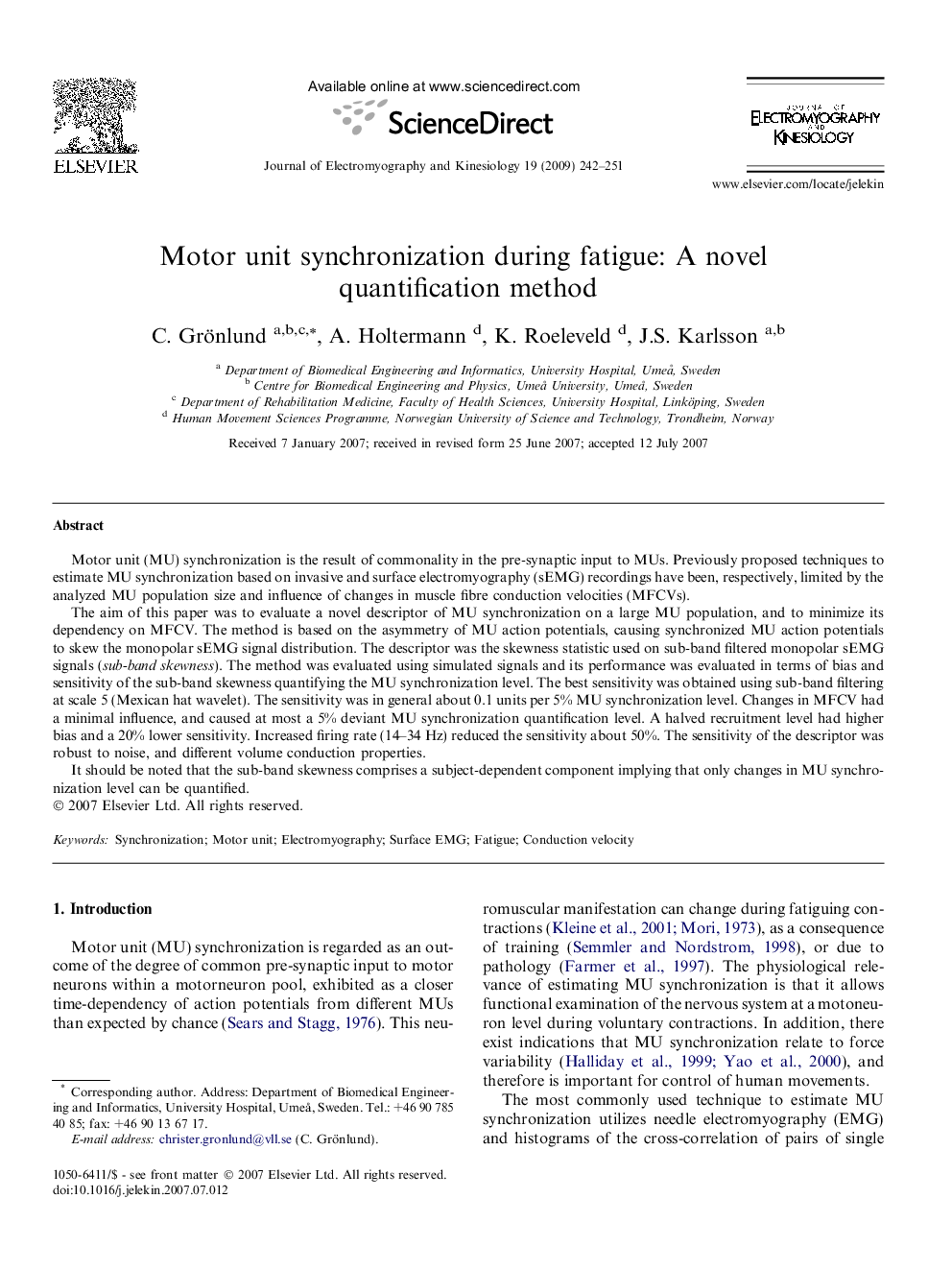| Article ID | Journal | Published Year | Pages | File Type |
|---|---|---|---|---|
| 4065552 | Journal of Electromyography and Kinesiology | 2009 | 10 Pages |
Motor unit (MU) synchronization is the result of commonality in the pre-synaptic input to MUs. Previously proposed techniques to estimate MU synchronization based on invasive and surface electromyography (sEMG) recordings have been, respectively, limited by the analyzed MU population size and influence of changes in muscle fibre conduction velocities (MFCVs).The aim of this paper was to evaluate a novel descriptor of MU synchronization on a large MU population, and to minimize its dependency on MFCV. The method is based on the asymmetry of MU action potentials, causing synchronized MU action potentials to skew the monopolar sEMG signal distribution. The descriptor was the skewness statistic used on sub-band filtered monopolar sEMG signals (sub-band skewness). The method was evaluated using simulated signals and its performance was evaluated in terms of bias and sensitivity of the sub-band skewness quantifying the MU synchronization level. The best sensitivity was obtained using sub-band filtering at scale 5 (Mexican hat wavelet). The sensitivity was in general about 0.1 units per 5% MU synchronization level. Changes in MFCV had a minimal influence, and caused at most a 5% deviant MU synchronization quantification level. A halved recruitment level had higher bias and a 20% lower sensitivity. Increased firing rate (14–34 Hz) reduced the sensitivity about 50%. The sensitivity of the descriptor was robust to noise, and different volume conduction properties.It should be noted that the sub-band skewness comprises a subject-dependent component implying that only changes in MU synchronization level can be quantified.
